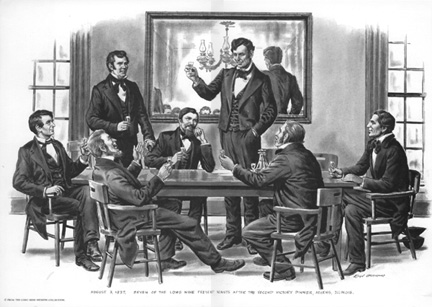Barely a year after statehood, Illinois’ new state government abandoned its original riverfront capital city of Kaskaskia and moved northeast to higher ground in Vandalia. It proved to be a wise choice: within a few decades, the Mississippi had changed course, and much of the original seat of government lay at the bottom of the river.
Less than 20 years later, Illinois was once again looking for a new capital city. The efforts of a freshman state legislator and eight of his colleagues would help shift it farther north.
It was never entirely clear whether Vandalia was intended to be a temporary or a permanent capital when state government moved in during 1820. The years in Illinois’ second capital city had been difficult. The first statehouse in the Fayette County town had burned to the ground in 1823. Another had been built, but it was already showing signs of deterioration: floors sagged, walls bowed and a local congregation which held its prayer meetings in the building decided it was prudent to find a better location.
Meanwhile, the Act which had moved the seat of state government to Vandalia was about to expire: it had a sunset date of 20 years, which was coming up in 1839. In anticipation of the recurrence of the issue, legislators began making the case for their preferred city. They agreed to place on the August 1834 general election ballot a question about the future location of the capital.
